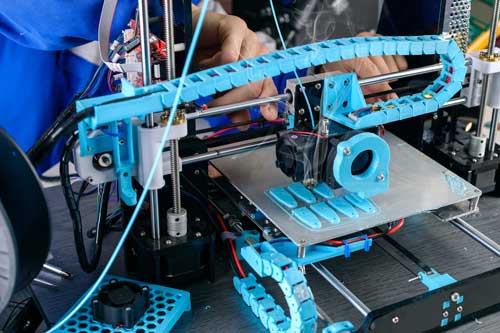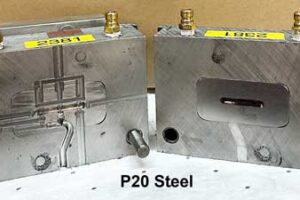 Your prototype is a success. Excellent design, happy customers, and now it’s time to scale. The fun has just begun!
Your prototype is a success. Excellent design, happy customers, and now it’s time to scale. The fun has just begun!
The process of ramping up from a few hundred or thousand parts to hundreds of thousands or millions is where most product teams learn the hardest lessons. Manufacturing at scale takes more than just a few tweaks – it’s a total transformation that brings a whole new set of challenges not seen during the prototype phase. These include tooling, process, quality, and delivery among other critical aspects. Today, we’ll look at the process of ramping up to production runs, the potential pitfalls, and how to avoid them.
The Tooling Reality
 Prototype tooling is perfect for what it’s designed for: short runs and design flexibility. But things like aluminum molds, 3D fixtures, and soft tooling can’t handle the demands of production runs. Imagine if you are starting with 10,000 parts a year, and run 500 cycles per month. If you go to a million parts annually, you’re now at 5,000+ cycles per month. Your aluminum mold will be shot in three months, instead of three years.
Prototype tooling is perfect for what it’s designed for: short runs and design flexibility. But things like aluminum molds, 3D fixtures, and soft tooling can’t handle the demands of production runs. Imagine if you are starting with 10,000 parts a year, and run 500 cycles per month. If you go to a million parts annually, you’re now at 5,000+ cycles per month. Your aluminum mold will be shot in three months, instead of three years.
You’ll need to upgrade to hardened steel tooling to get the job done. But design upgrades will certainly be required. For instance, cycle times will change due to different thermal properties. Your draft angles will likely need reconsideration. Often, ones that work in soft tooling, can cause ejection problems. Tighter tolerances will create additional challenges as well. We strongly recommend that you use mold flow analysis at this phase to help mitigate these types of issues once those production lines are running.
Process Validation Demands
The mindset now must shift from “it works” to “it always works”. With shorter runs, you are able to inspect everything. But when you scale to, say, a million parts, you’re producing 4,000 parts per day. Individual part inspection becomes a challenge. While it can be done through in-line machine vision systems, quality must be built into every phase of the process.
Ironically, scale itself becomes a threat to quality. Your job will require more people, going from a few trained technicians to dozens of operators across multiple shifts. Consider working with a supplier that has automation capabilities to help reduce the labor and associated costs, while shortening lead times.
Production runs now require 100x more material from multiple lots and/or material suppliers. The problem? Batch-to-batch differences will drive defects. Be sure to work with an injection molding shop that works with trusted and proven suppliers and has already tackled this challenge.
Demand Traceability!
Prototype calipers will no longer cut it. The days of receiving parts in boxes with simple packing slips are over. You’ll now require detailed quality documentation and lot traceability. This means you know the source of the material, when it was made, and many other variables that drive production and ultimately, quality. Without this, it becomes almost impossible to get to the root of a defect issue and resolve it.
When working with your supplier, make sure you clearly define the following:
- Exactly what will be inspected, and how often
- What specific documentation will be included. Typical docs include certifications of conformance, dimensional reports, material certifications, etc.
- How are parts serialized or lot-tracked? This is a critical aspect to understand.
- How are defects communicated and contained? Is there a documented process in place that gets to the source of the issue, and works with all involved, including the customer, to resolve it?
It Takes Longer Than You Think
 One of the biggest sources of frustration when ramping up is the time it takes to successfully scale from prototype to production. While it can happen quicker, it’s not unusual for it to take up to 24 months to do. Steps such as tooling design, production and testing will likely take several months. Then you’ll need to budget time for tool sampling, iterations, and first article inspection. It takes time to design and produce the molds. Teams that attempt to shortcut this process often sacrifice proper process validation, deal with single-source vulnerabilities, and may end up with expensive design changes.
One of the biggest sources of frustration when ramping up is the time it takes to successfully scale from prototype to production. While it can happen quicker, it’s not unusual for it to take up to 24 months to do. Steps such as tooling design, production and testing will likely take several months. Then you’ll need to budget time for tool sampling, iterations, and first article inspection. It takes time to design and produce the molds. Teams that attempt to shortcut this process often sacrifice proper process validation, deal with single-source vulnerabilities, and may end up with expensive design changes.
Be Prepared
There is a smarter way to do this. Engaging production molding expertise during the prototype phase will pay off in the long run. Your goal is to design for production tooling from day one. Getting the draft angles, gate locations, and wall thicknesses right early on means you won’t need to redo the work. Also, try to establish your critical dimensions and statistical requirements early on. And before fully ramping up, insist on production-rate validation trials. These considerations will make it much easier to ramp up at go time.
The difference between manufacturers that will scale well versus those that struggle to do so isn’t a matter of luck. It takes preparation. Designing your product and process for long runs from inception will pay dividends in the long run.
One final thought. When working with an experienced injection molder, think of us as your manufacturing partner, not just another vendor. We can tell you for sure that companies that work collaboratively with us from the beginning scale successfully. The formula here is simple (if not cliché): the customer’s success is in fact our success!

Comments are closed